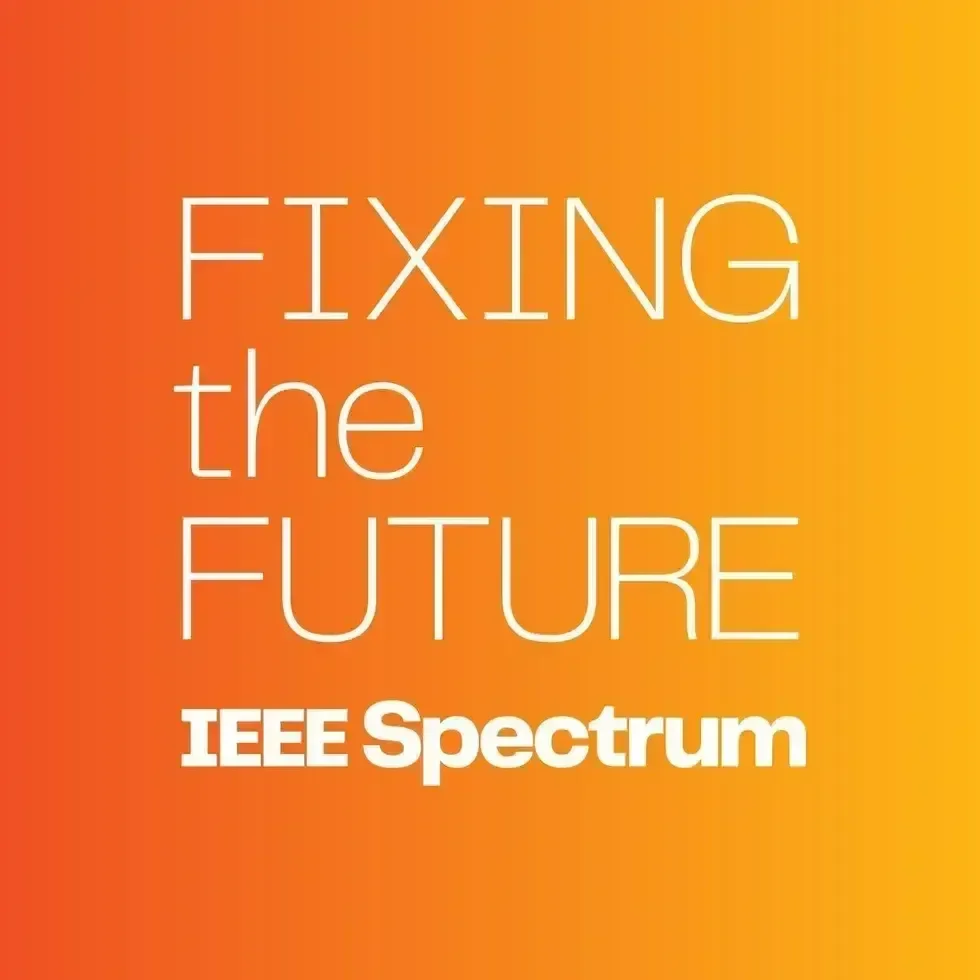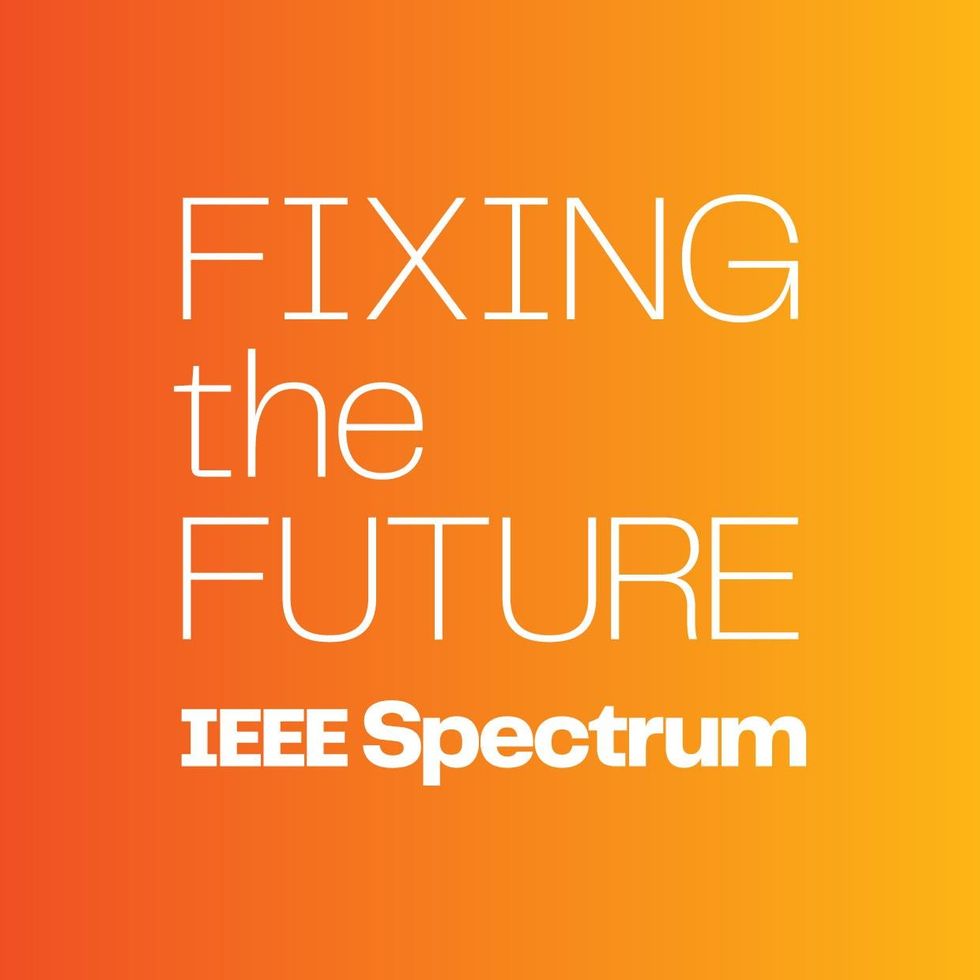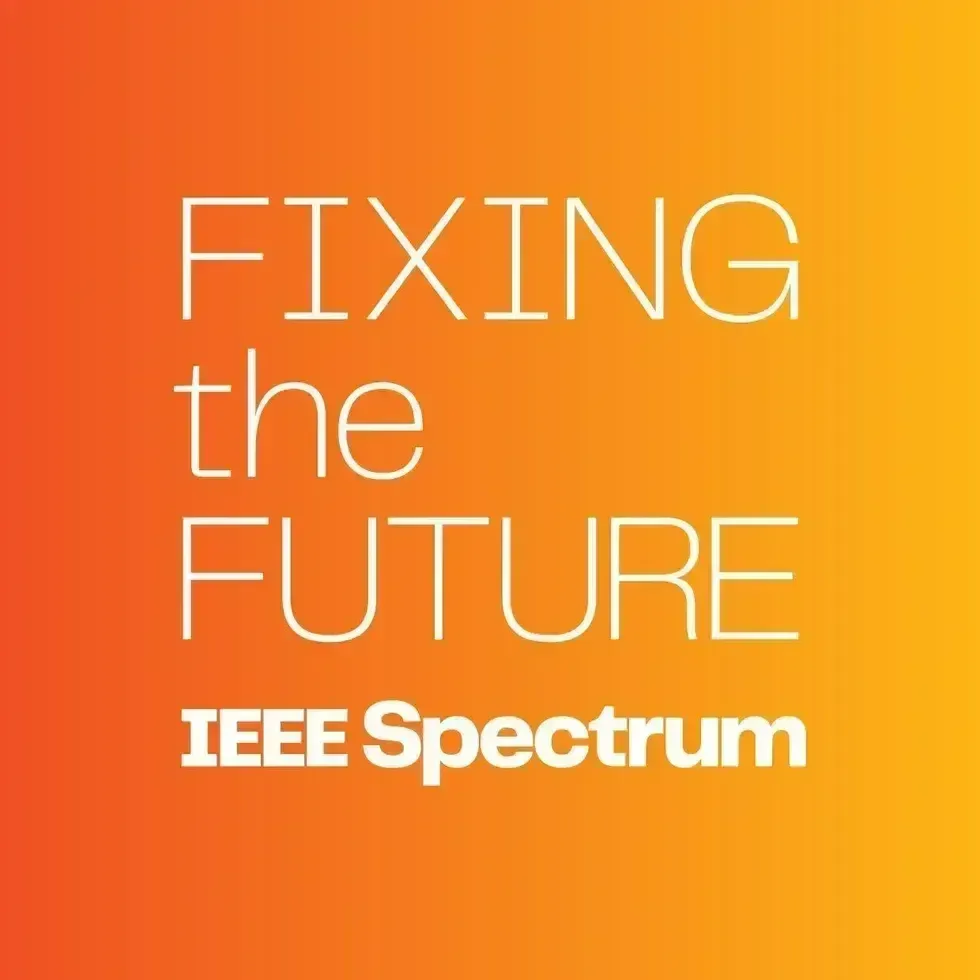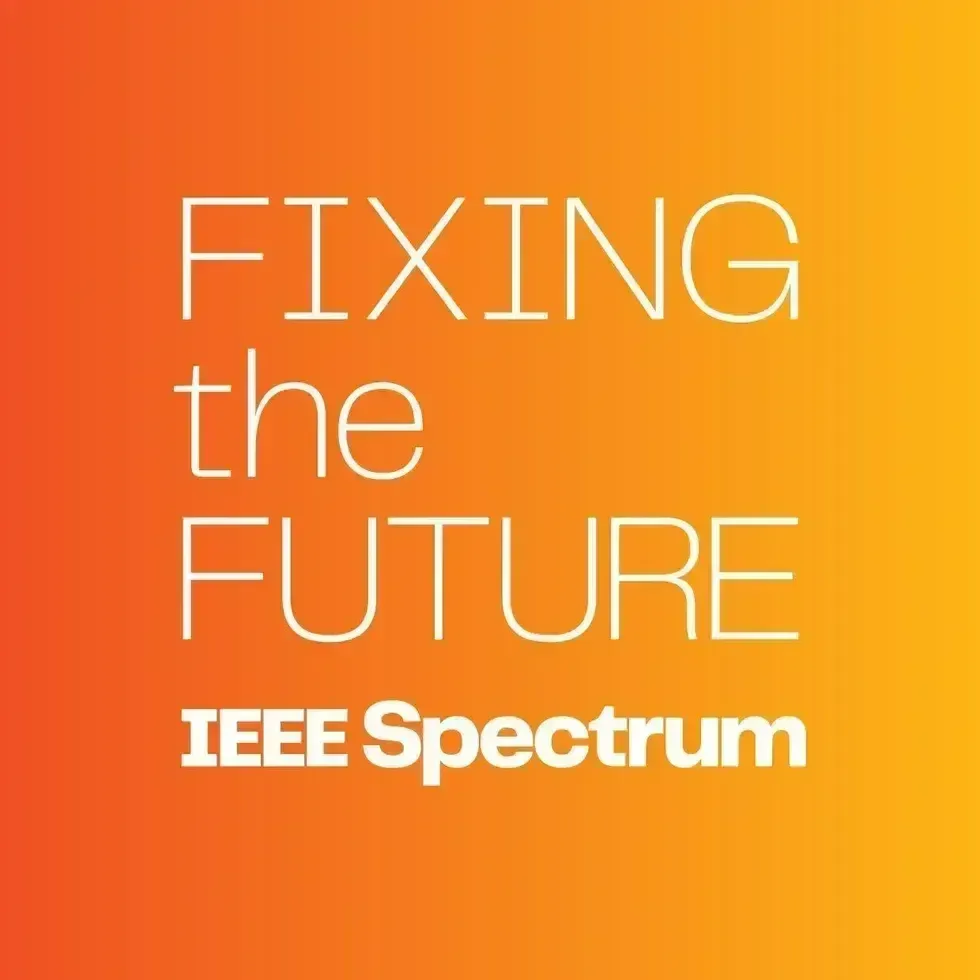Using AI to Clear Land Mines in Ukraine

Stephen Cass: Hello. I’m Stephen Cass, Special Projects Director at IEEE Spectrum. Before starting today’s episode hosted by Eliza Strickland, I wanted to give you all listening out there some news about this show.
This is our last episode of Fixing the Future. We’ve really enjoyed bringing you some concrete solutions to some of the world’s toughest problems, but we’ve decided we’d like to be able to go deeper into topics than we can in the course of a single episode. So we’ll be returning later in the year with a program of limited series that will enable us to do those deep dives into fascinating and challenging stories in the world of technology. I want to thank you all for listening and I hope you’ll join us again. And now, on to today’s episode.
Eliza Strickland: Hi, I’m Eliza Strickland for IEEE Spectrum‘s Fixing the Future podcast. Before we start, I want to tell you that you can get the latest coverage from some of Spectrum’s most important beats, including AI, climate change, and robotics, by signing up for one of our free newsletters. Just go to spectrum.IEEE.org/newsletters to subscribe.
Around the world, about 60 countries are contaminated with land mines and unexploded ordnance, and Ukraine is the worst off. Today, about a third of its land, an area the size of Florida, is estimated to be contaminated with dangerous explosives. My guest today is Gabriel Steinberg, who co-founded both the nonprofit Demining Research Community and the startup Safe Pro AI with his friend, Jasper Baur. Their technology uses drones and artificial intelligence to radically speed up the process of finding land mines and other explosives. Okay, Gabriel, thank you so much for joining me on Fixing the Future today.
Gabriel Steinberg: Yeah, thank you for having me.
Strickland: So I want to start by hearing about the typical process for demining, and so the standard operating procedure. What tools do people use? How long does it take? What are the risks involved? All that kind of stuff.
Steinberg: Sure. So humanitarian demining hasn’t changed significantly. There’s been evolutions, of course, since its inception and about the end of World War I. But mostly, the processes have been the same. People stand from a safe location and walk around an area in areas that they know are safe, and try to get as much intelligence about the contamination as they can. They ask villagers or farmers, people who work around the area and live around the area, about accidents and potential sightings of minefields and former battle positions and stuff. The result of this is a very general idea, a polygon, of where the contamination is. After that polygon and some prioritization based on danger to civilians and economic utility, the field goes into clearance. The first part is the non-technical survey, and then this is clearance. Clearance happens one of three ways, usually, but it always ends up with a person on the ground basically doing extreme gardening. They dig out a certain standard amount of the soil, usually 13 centimeters. And with a metal detector, they walk around the field and a mine probe. They find the land mines and nonexploded ordnance. So that always is how it ends.
To get to that point, you can also use mechanical assets, which are large tillers, and sometimes dogs and other animals are used to walk in lanes across the contaminated polygon to sniff out the land mines and tell the clearance operators where the land mines are.
Strickland: How do you hope that your technology will change this process?
Steinberg: Well, my technology is a drone-based mapping solution, basically. So we provide a software to the humanitarian deminers. They are already flying drones over these areas. Really, it started ramping up in Ukraine. The humanitarian demining organizations have started really adopting drones just because it’s such a massive problem. The extent is so extreme that they need to innovate. So we provide AI and mapping software for the deminers to analyze their drone imagery much more effectively. We hope that this process, or our software, will decrease the amount of time that deminers use to analyze the imagery of the land, thereby more quickly and more effectively constraining the areas with the most contamination. So if you can constrain an area, a polygon with a certainty of contamination and a high density of contamination, then you can deploy the most expensive parts of the clearance process, which are the humans and the machines and the dogs. You can deploy them to a very specific area. You can much more cost-effectively and efficiently demine large areas.
Strickland: Got it. So it doesn’t replace the humans walking around with metal detectors and dogs, but it gets them to the right spots faster.
Steinberg: Exactly. Exactly. At the moment, there is no conception of replacing a human in demining operations, and people that try to push that eventuality are usually disregarded pretty quickly.
Strickland: How did you and your co-founder, Jasper, first start experimenting with the use of drones and AI for detecting explosives?
Steinberg: So it started in 2016 with my partner, Jasper Baur, doing a research project at Binghamton University in the remote sensing and geophysics lab. And the project was to detect a specific anti-personnel land mine, the PFM-1. Then found— it’s a Russian-made land mine. It was previously found in Afghanistan. It still is found in Afghanistan, but it’s found in much higher quantities right now in Ukraine. And so his project was to detect the PFM-1 anti-personnel land mine using thermal imagery from drones. It sort of snowballed into quite an intensive research project. It had multiple papers from it, multiple researchers, some awards, and most notably, it beat NASA at a particular Tech Briefs competition. So that was quite a morale boost.
And at some point, Jasper had the idea to integrate AI into the project. Rightfully, he saw the real bottleneck as not the detecting of land mines in drone imagery, but the analysis of land mines in drone imagery. And that really has become— I mean, he knew, somehow, that that would really become the issue that everybody is facing. And everybody we talked to in Ukraine is facing that issue. So machine learning really was the key for solving that problem. And I joined the project in 2018 to integrate machine learning into the research project. We had some more papers, some more presentations, and we were nearing the end of our college tenure, of our undergraduate degree, in 2020. So at that time– but at that time, we realized how much the field needed this. We started getting more and more into the mine action field, and realizing how neglected the field was in terms of technology and innovation. And we felt an obligation to bring our technology, really, to the real world instead of just a research project. There were plenty of research projects about this, but we knew that it could be more and that it should. It really should be more. And we felt we had the– for some reason, we felt like we had the capability to make that happen.
So we formed a nonprofit, the Demining Research Community, in 2020 to try to raise some funding for this project. Our for-profit end of that, of our endeavors, was acquired by a company called Safe Pro Group in 2023. Yeah, 2023, about one year ago exactly. And the drone and AI technology became Safe Pro AI and our flagship product spotlight. And that’s where we’re bringing the technology to the real world. The Demining Research Community is providing resources for other organizations who want to do a similar thing, and is doing more research into more nascent technologies. But yeah, the real drone and AI stuff that’s happening in the real world right now is through Safe Pro.
Strickland: So in that early undergraduate work, you were using thermal sensors. I know now the Spotlight AI system is using more visual. Can you talk about the different modalities of sensing explosives and the sort of trade-offs you get with them?
Steinberg: Sure. So I feel like I should preface this by saying the more high tech and nascent the technology is, the more people want to see it apply to land mine detection. But really, we have found from the problems that people are facing, by far the most effective modality right now is just visual imagery. People have really good visual sensors built into their face, and you don’t need a trained geophysicist to observe the data and very, very quickly get actionable intelligence. There’s also plenty of other benefits. It’s cheaper, much more readily accessible in Ukraine and around the world to get built-in visual sensors on drones. And yeah, just processing the data, and getting the intelligence from the data, is way easier than anything else.
I’ll talk about three different modalities. Well, I guess I could talk about four. There’s thermal, ground penetrating radar, magnetometry, and lidar. So thermal is what we started with. Thermal is really good at detecting living things, as I’m sure most people can surmise. But it’s also pretty good at detecting land mines, mostly large anti-tank land mines buried under a couple millimeters, or up to a couple centimeters, of soil. It’s not super good at this. The research is still not super conclusive, and you have to do it at a very specific time of day, in the morning and at night when, basically the soil around the land mine heats up faster than the land mine and you cause a thermal anomaly, or the sun causes a thermal anomaly. So it can detect things, land mines, in some amount of depth in certain soils, in certain weather conditions, and can only detect certain types of land mines that are big and hefty enough. So yeah, that’s thermal.
Ground penetrating radar is really good for some things. It’s not really great for land mine detection. You have to have really expensive equipment. It takes a really long time to do the surveys. However, it can get plastic land mines under the surface. And it’s kind of the only modality that can do that with reliability. However, you need to train geophysicists to analyze the data. And a lot of the time, the signatures are really non-unique and there’s going to be a lot of false positives. Magnetometry is the other-- by the way, all of this is airborne that I’m referring to. Ground-based GPR and magnetometry are used in demining of various types, but airborne is really what I’m talking about.
For magnetometry, it’s more developed and more capable than ground penetrating radar. It’s used, actually, in the field in Ukraine in some scenarios, but it’s still very expensive. It needs a trained geophysicist to analyze the data, and the signatures are non-unique. So whether it’s a bottle can or a small anti-personnel land mine, you really don’t know until you dig it up. However, I think if I were to bet on one of the other modalities becoming increasingly useful in the next couple of years, it would be airborne magnetometry.
Lidar is another modality that people use. It’s pretty quick, also very expensive, but it can reliably map and find surface anomalies. So if you want to find former fighting positions, sometimes an indicator of that is a trench line or foxholes. Lidar is really good at doing that in conflicts from long ago. So there’s a paper that the HALO Trust published of flying a lidar mission over former fighting positions, I believe, in Angola. And they reliably found a former trench line. And from that information, they confirmed that as a hazardous area. Because if there is a former front line on this position, you can pretty reliably say that there is going to be some explosives there.
Strickland: And so you’ve done some experiments with some of these modalities, but in the end, you found that the visual sensor was really the best bet for you guys?
Steinberg: Yeah. It’s different. The requirements are different for different scenarios and different locations, really. Ukraine has a lot of surface ordnance. Yeah. And that’s really the main factor that allows visual imagery to be so powerful.
Strickland: So tell me about what role machine learning plays in your Spotlight AI software system. Did you create a model trained on a lot of— did you create a model based on a lot of data showing land mines on the surface?
Steinberg: Yeah. Exactly. We used real-world data from inert, non-explosive items, and flew drone missions over them, and did some physical augmentation and some programmatic augmentation. But all of the items that we are training on are real-life Russian or American ordnance, mostly. We’re also using the real-world data in real minefields that we’re getting from Ukraine right now. That is, obviously, the most valuable data and the most effective in building a machine learning model. But yeah, a lot of our data is from inert explosives, as well.
Strickland: So you’ve talked a little bit about the current situation in Ukraine, but can you tell me more about what people are dealing with there? Are there a lot of areas where the battle has moved on and civilians are trying to reclaim roads or fields?
Steinberg: Yeah. So the fighting is constantly ongoing, obviously, in eastern Ukraine, but I think sometimes there’s a perspective of a stalemate. I think that’s a little misleading. There’s lots of action and violence happening on the front line, which constantly contaminates, cumulatively, the areas that are the front line and the gray zone, as well as areas up to 50 kilometers back from both sides. So there’s constantly artillery shells going into villages and cities along the front line. There’s constantly land mines, new mines, being laid to reinforce the positions. And there’s constantly mortars. And everything is constant. In some fights—I just watched the video yesterday—one of the soldiers said you could not count to five without an explosion going off. And this is just one location in one city along the front. So you can imagine the amount of explosive ordnance that are being fired, and inevitably 10, 20, 30 percent of them are sometimes not exploding upon impact, on top of all the land mines that are being purposely laid and not detonating from a vehicle or a person. These all just remain after the war. They don’t go anywhere. So yeah, Ukraine is really being littered with explosive ordnance and land mines every day.
This past year, there hasn’t been terribly much movement on the front line. But in the Ukrainian counteroffensive in 2020— I guess the last major Ukrainian counteroffensive where areas of Mykolaiv, which is in the southeast, were reclaimed, the civilians started repopulating the city almost immediately. There are definitely some villages that are heavily contaminated, that people just deserted and never came back to, and still haven’t come back to after them being liberated. But a lot of the areas that have been liberated, they’re people’s homes. And even if they’re destroyed, people would rather be in their homes than be refugees. And I mean, I totally understand that. And it just puts the responsibility on the deminers and the Ukrainian government to try to clear the land as fast as possible. Because after large liberations are made, people want to come back almost all the time. So it is a very urgent problem as the lines change and as land is liberated.
Strickland: And I think it was about a year ago that you and Jasper went to the Ukraine for a technology demonstration set up by the United Nations. Can you tell about that, and what the task was, and how your technology fared?
Steinberg: Sure. So yeah, the United Nations Development Program invited us to do a demonstration in northern Ukraine to see how our technology, and other technologies similar to it, performed in a military training facility in Ukraine. So everybody who’s doing this kind of thing, which is not many people, but there are some other organizations, they have their own metrics and their own test fields— not always, but it would be good if they did. But the UNDP said, “No, we want to standardize this and try to give recommendations to the organizations on the ground who are trying to adopt these technologies.” So we had five hours to survey the field and collect as much data as we could. And then we had 72 hours to return the results. We—
Strickland: Sorry. How big was the field?
Steinberg: The field was 25 hectares. So yeah, the audience at home can type 25 hectares to amount of football fields. I think it’s about 60. But it’s a large area. So we’d never done anything like that. That was really, really a shock that it was that large of an area. I think we’d only done half a hectare at a time up to that point. So yeah, it was pretty daunting. But we basically slept very, very little in those 72 hours, and as a result, produced what I think is one of the best results that the UNDP got from that test. We didn’t detect everything, but we detected most of the ordnance and land mines that they had laid. We also detected some that they didn’t know were there because it was a military training facility. So there were some mortars being fired that they didn’t know about.
Strickland: And I think Jasper told me that you had to sort of rewrite your software on the fly. You realized that the existing approach wasn’t going to work and you had to do some all-nighter to recode?
Steinberg: Yeah. Yeah, I remember us sitting in a Georgian restaurant— Georgia, the country, not the state, and racking our brain, trying to figure out how we were going to map this amount of land. We just found out how big the area was going to be and we were a little bit stunned. So we devised a plan to do it in two stages. The first stage was where we figured out in the drone images where the contaminated regions were. And then the second stage was to map those areas, just those areas. Now, our software can actually map the whole thing, and pretty casually too. So not to brag. But at the time, we had lots less development under our belt. And yeah, therefore we just had to brute force it through Georgian food and brainpower.
Strickland: You and Jasper just got back from another trip to the Ukraine a couple of weeks ago, I think. Can you talk about what you were doing on this trip, and who you met with?
Steinberg: Sure. This trip was much less stressful, although stressful in different ways than the UNDP demo. Our main objectives were to see operations in action. We had never actually been to real minefields before. We’d been in some perhaps contaminated areas, but never in a real minefield where you can say, “Here was the Russian position. There are the land mines. Do not go there.” So that was one of the main objectives. That was very powerful for us to see the villages that were destroyed and are denied to the citizens because of land mines and unexploded ordnance. It’s impossible to describe how that feels being there. It’s really impactful, and it makes the work that I’m doing feel not like I have a choice anymore. I feel very much obligated to do my absolute best to help these people.
Strickland: Well, I hope your work continues. I hope there’s less and less need for it over time. But yeah, thank you for doing this. It’s important work. And thanks for joining me on Fixing the Future.
Steinberg: My pleasure. Thank you for having me.
Strickland: That was Gabriel Steinberg speaking to me about the technology that he and Jasper Baur developed to help rid the world of land mines. I’m Eliza Strickland, and I hope you’ll join us next time on Fixing the Future.







